A Simple Step toward Pharmacology: Let us Find out How the Drugs Work
In pharmacology we want to explain the mechanisms of meds. The main thing is to find out how the meds are affecting our body and what they can cause. In this article, I will explain to you how they affect the cells of our body and what is happening in our organism when we take some medicine.
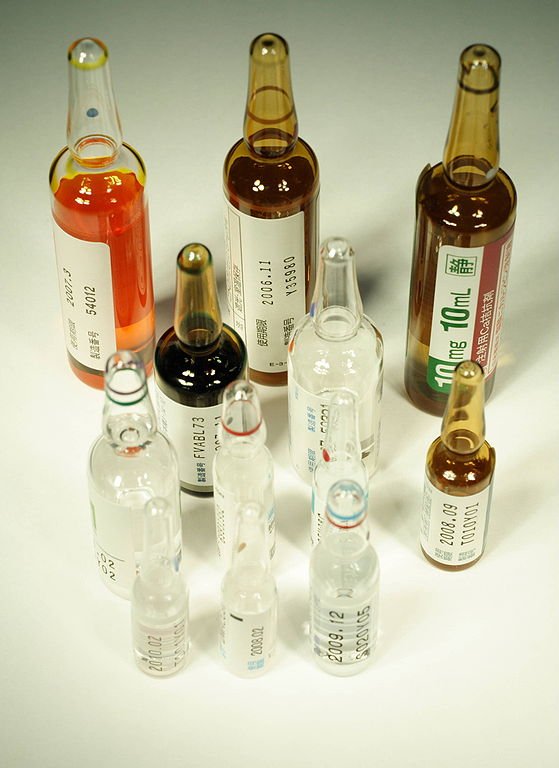
Interaction between drugs and cells
In this area we owe a lot to the Paul Ehrlich. He was a German scientist who claimed that there is some kind of interaction between drugs and our cells. He also was the first person who said that we can explain the effect of some really potent drugs using scientific knowledge. He denied the belief that drugs can have some special unnatural powers.
We have more molecules in our body than there is in a drug we are taking. So, it could happen that drug doesn’t work in our body at all. Molecules of the drug could just disappear in our organism. Paul Ehrlich knew that and he was the first scientist who said that it is really important for molecules of the drug to find the right place to enter. They have to find the right cells and make interaction with them. Most of the drugs attach themselves with the proteins in our cells. That means proteins are their targets. However, some of the drugs directly affect our DNA and some of them are attaching with calcium salts from our bones.
Proteins – targets of the drugs
Drug molecules are most commonly attached with regulatory proteins: enzymes, proteins transmitters, ion channels, receptors. There are several other types of proteins and they can also be the target spots of drugs. For example, our body also has structural proteins and some drugs can bind to them. Also, we are still not able to tell how some of the meds work and how they enter into the cells. There are a lot of drugs that can attach with proteins in plasma or with other components of the cell (besides proteins which are the target spots).
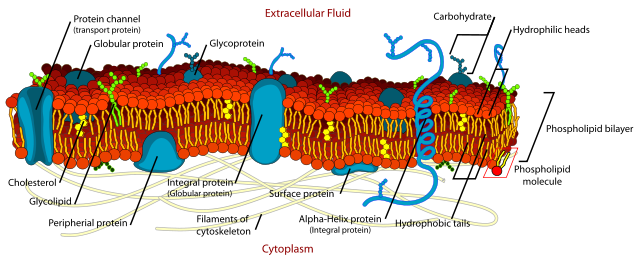
However, one of the most important characteristics of the drug is to be selective. Its molecules should find specific cells in our body and attach with them. In the same time, proteins in our body are also sensitive only in one specific type of molecules, so other drugs cannot affect them. If we would change only one part of the drug molecule, the protein would not recognize it and there would be no effect.
There is something more you should know. Everybody knows that meds often have some adverse effects. We are taking drugs because of one disease and we are feeling better, but we also feel some dizziness or nausea. The reason is simple. The molecules of the drug can attach not only with the correct protein but also with some other proteins in our body and that can cause some adverse effects. That often happens with less potent drugs. They are too weak to affect our body so we have to take a higher dose and that means we have more molecules of that drug in our body. That means that molecules can easily bind to some other proteins and cause adverse effects.
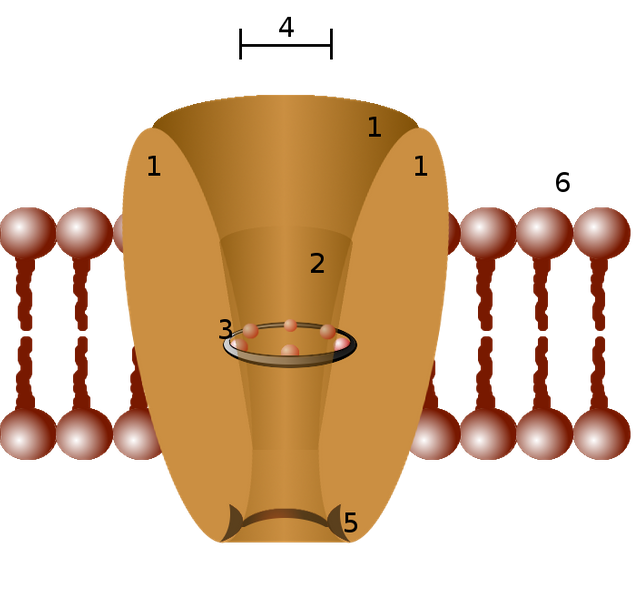
Interaction between drug and receptors
Drug molecules bind to the receptor and cause its activation. That means that cells, tissue, and our body are going to react somehow. However, attaching with the receptor can cause activation but not always. The molecule that binds to the receptor and causes its activation and response is called agonist. But, there is also antagonist. It can also bind to the receptor but it is not going to cause activation. It is just going to take place of agonist. In this way, antagonist disables receptor and we don’t have any effect. Because of this, we are talking about two different characteristics of the drugs. First one is affinity – the ability of the drug to bind to the receptor. Second is efficiency – ability of the drug to activate receptors. More potent drugs have higher affinity. Agonists have higher efficiency and for antagonists, we can simply say that their efficiency is equal to zero. Agonists with maximal efficiency are full agonists. But there are also partial agonists which efficiency is lower.
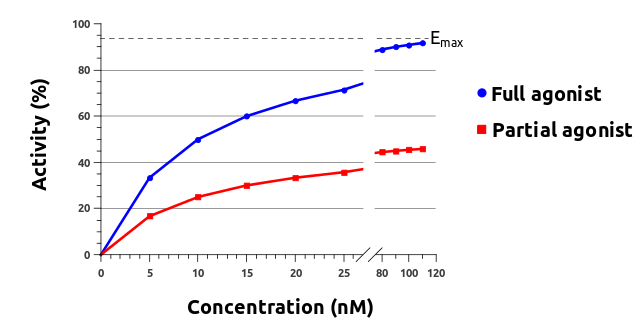
How we can measure affinity of the drugs?
There is a way. Scientists use radioactive molecules of the drugs. The usual procedure starts with incubation of tissue samples (or fragments of the membrane) with different concentrations of the radioactive drug until the balance is achieved. After that, we remove tissue or separate membranes fragments by filtration or by centrifugation and then dissolve them in a scintillation solvent to measure the radioactive content.
There is always a certain amount of non-specific binding of the molecules and that’s covering the specific component, so we need to keep that to a minimum. The amount of non-specific binding is calculated by the measurement of radioactivity obtained in the presence of saturation concentration (non-radioactive) ligand, which completely prevents the binding of the radioactive drug to the receptors, leaving behind itself the non-specific component. After that, we subtract this value from the total binding value in order to obtain specific binding.
But there is also another way. We can use the drug and then we can see how the organs are responding. This is called biological response. For example high blood pressure, contraction, and relaxation of smooth muscle or activation of some enzyme. However, this is not that much precisely.
Competitive antagonists
I have already mentioned that there is some kind of competition between molecules of drugs. They can be agonists or antagonist and is antagonist comes first nearby the receptor, it will bind to it. It’s not going to activate the receptor, but it’s going to take the place of agonist. The receptor can receive only one of them. Agonist and antagonist are often similar in their chemical structure. And they are always in competition. In the case when we have the same concentration of agonist and antagonist, the agonist is not going to make responses of our body in the way we want. That’s because antagonist is going to compete with it. In that case, we can increase the concentration of the agonist and make sure we get the response that we want. In this case, we are talking about the competition that can be solvable. We are talking about reversible competitive antagonism. This kind of competition is really often.
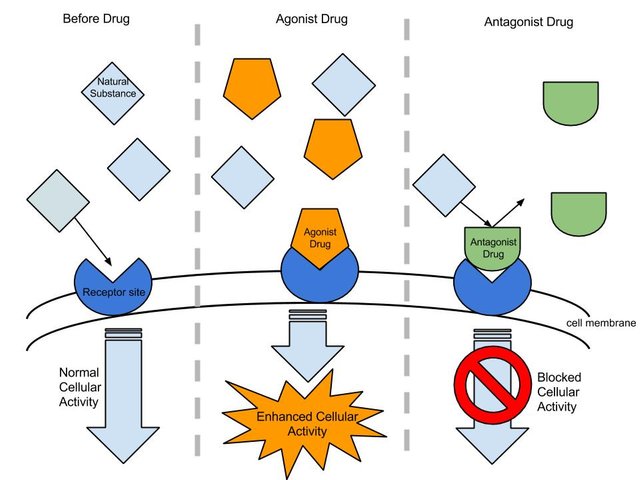 Wikimedia commonsDolleyjCC BY-SA 3.0
Wikimedia commonsDolleyjCC BY-SA 3.0
Other types of competitions
Activity of one drug is often reduced by another drug. Competitive antagonism was just one, the most common situation. There are other types of competition. For example, there is chemical antagonism. This situation can happen if molecules of two drugs enter into the chemical reaction. They can make some other chemical complex and we are not going to get the effect. But there is a good thing about this. We can use this in therapy. For example, we can deactivate heavy metals in the organism and reduce their toxic effect using drug called dimercaprol.
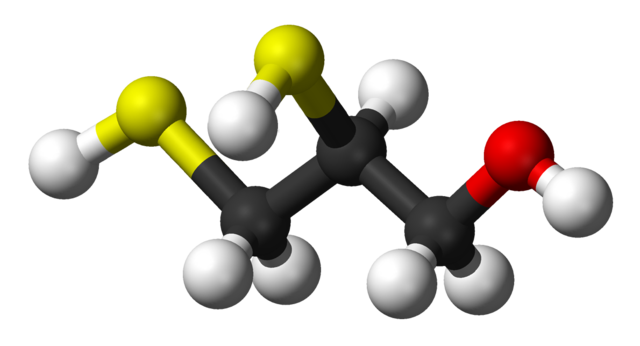
There is also something that we call pharmacokinetic antagonism. In this case, the antagonist is going to decrease the concentration of agonist in the target spot. The mechanism is different for different combinations of the drugs. For example, warfarin is anticoagulant, but its effect can be stopped by using phenobarbital. Phenobarbital can provoke faster hepatic metabolism of warfarin and its effect will be disabled.

Antagonism caused by blockade of the receptor
We already mentioned and described reversible competitive antagonism. But there is also irreversible competitive antagonism. This situation is a little bit harder because the agonist is not able to compete with the antagonist. It’s too weak or too slow for that. The drugs which bind to receptors through covalent bonds often have the irreversible type of antagonism.
Non-competitive antagonism
This situation is a little bit different. Receptors stay free and antagonists are not the competitors for target spot. They are making a problem in some other place and in that way they are making agonists unable to reach the receptors. For example, verapamil can stop calcium ions to enter through the cell membrane and in that way it can unable some drugs to cause contraction of the smooth muscles.

Physiological antagonism
This is the situation when we have two different drugs which cause two opposite effects in our body. Histamine is affecting cells in our stomach and it is causing secretion of hydrochloric acid, but omeprazole is going to stop this process because it is causing opposite effect.
Losing sensitivity (tachyphylaxis and desensitization)
The sensitivity of the receptors can decrease during the time if we are using some drug constantly or even just a couple of times. Our receptors are losing their sensitivity suddenly. We call those phenomenon tachyphylaxis and desensitization. If the effect of the medicine is getting weaker and weaker during a couple of days or weeks, we are talking about drug tolerance. Resistance is another term and we are using it when some antimicrobial meds lose activity. Those situations can happen if there are some changes inside of the receptors or even because of losing receptors in our cells.

I hope this article was interesting and educative and that helped you to understand how are drugs affecting our organism and how do they work. Thanks for reading.

Referecnces:
Humphrey P. Rangc, Maureen M. Dale, James M. Ritter, Philip K. Moore, Farmakologija, Novi Sad, 2005;
Jules Heuberger, Stephan Schmidt, Hartmut Derendorf, When is Protein Binding Important?, Wiley Online Library, 2013;
Calvey N, Williams N, Partial agonists, Principles and Practice of Pharmacology for Anaesthetists, p. 62, 2009;
Wyllie DJ, Chen PE, Taking the time to study competitive antagonism, British Journal of Pharmacology, 150 (5), 541–51, 2007.

Wow, I finally know how medicine works. haha. Thanks for sharing! This is a good research article. :) Good thing I don't drink much medicine so I won't have to worry about desensitivity. Hehe.
Thanks for reading and commenting. It's good not to drink a lot of medicine. It's better not to take them if you don't need them that much.
Haha yeah. I rarely drink medicine. 😂 Only when it's really really needed.
Posted using Partiko Android
You really cover this topic in full. Nice Work!
Thanks for reading and commenting. I did my best. :)
Necessary topic and well done @anasav !
Thanks for your comment. I also read your blog. Nice topics as well. Steem on. :)
This post has been voted on by the SteemSTEM curation team and voting trail in collaboration with @utopian-io and @curie.
If you appreciate the work we are doing then consider voting all three projects for witness by selecting stem.witness, utopian-io and curie!
For additional information please join us on the SteemSTEM discord and to get to know the rest of the community!
Hi @anasav!
Your post was upvoted by Utopian.io in cooperation with @steemstem - supporting knowledge, innovation and technological advancement on the Steem Blockchain.
Contribute to Open Source with utopian.io
Learn how to contribute on our website and join the new open source economy.
Want to chat? Join the Utopian Community on Discord https://discord.gg/h52nFrV